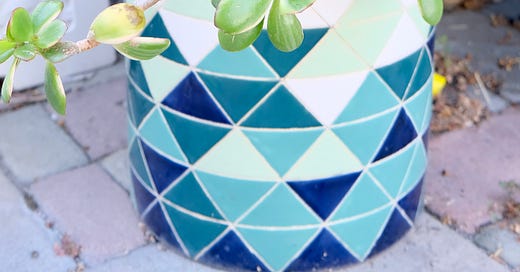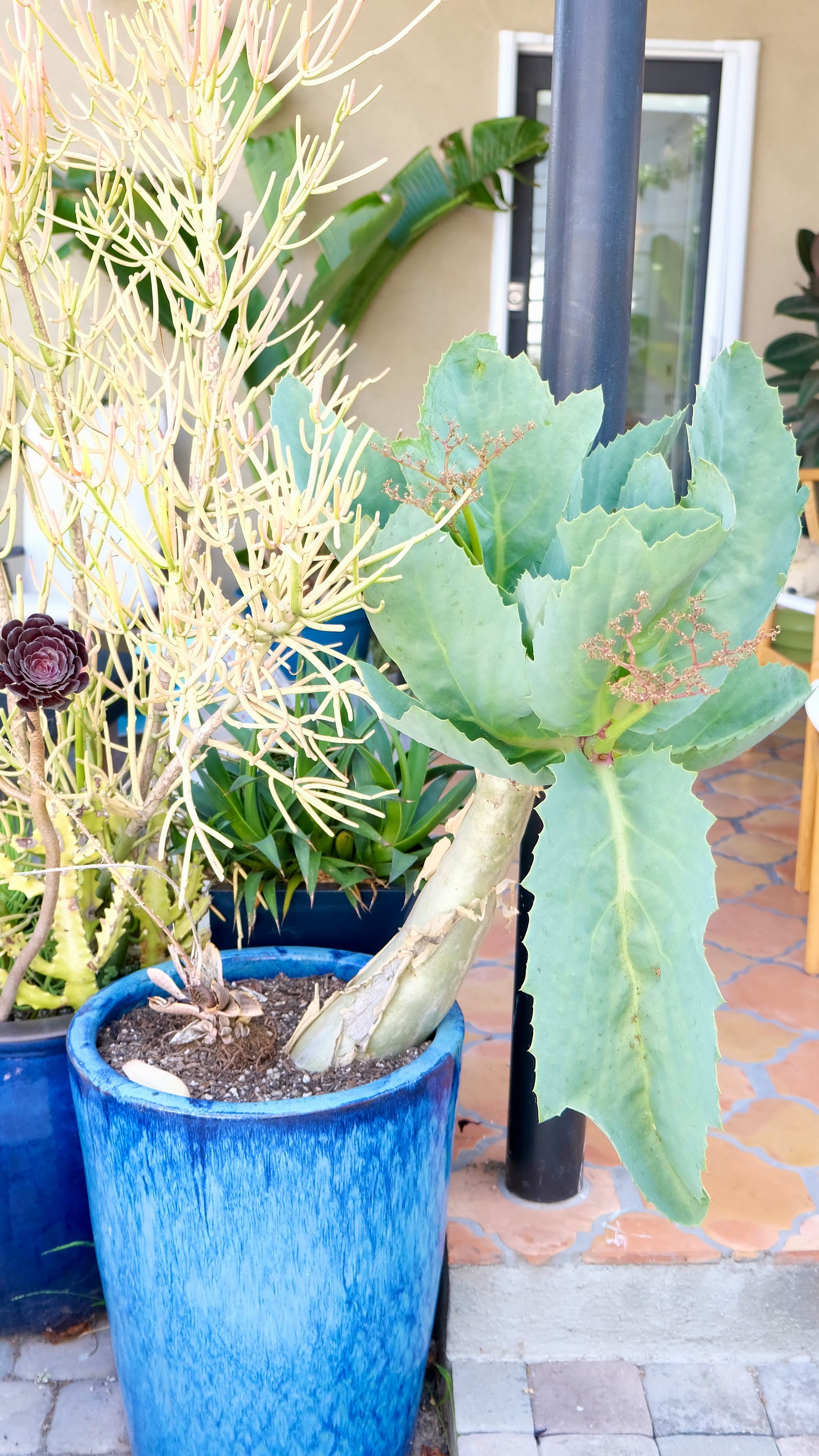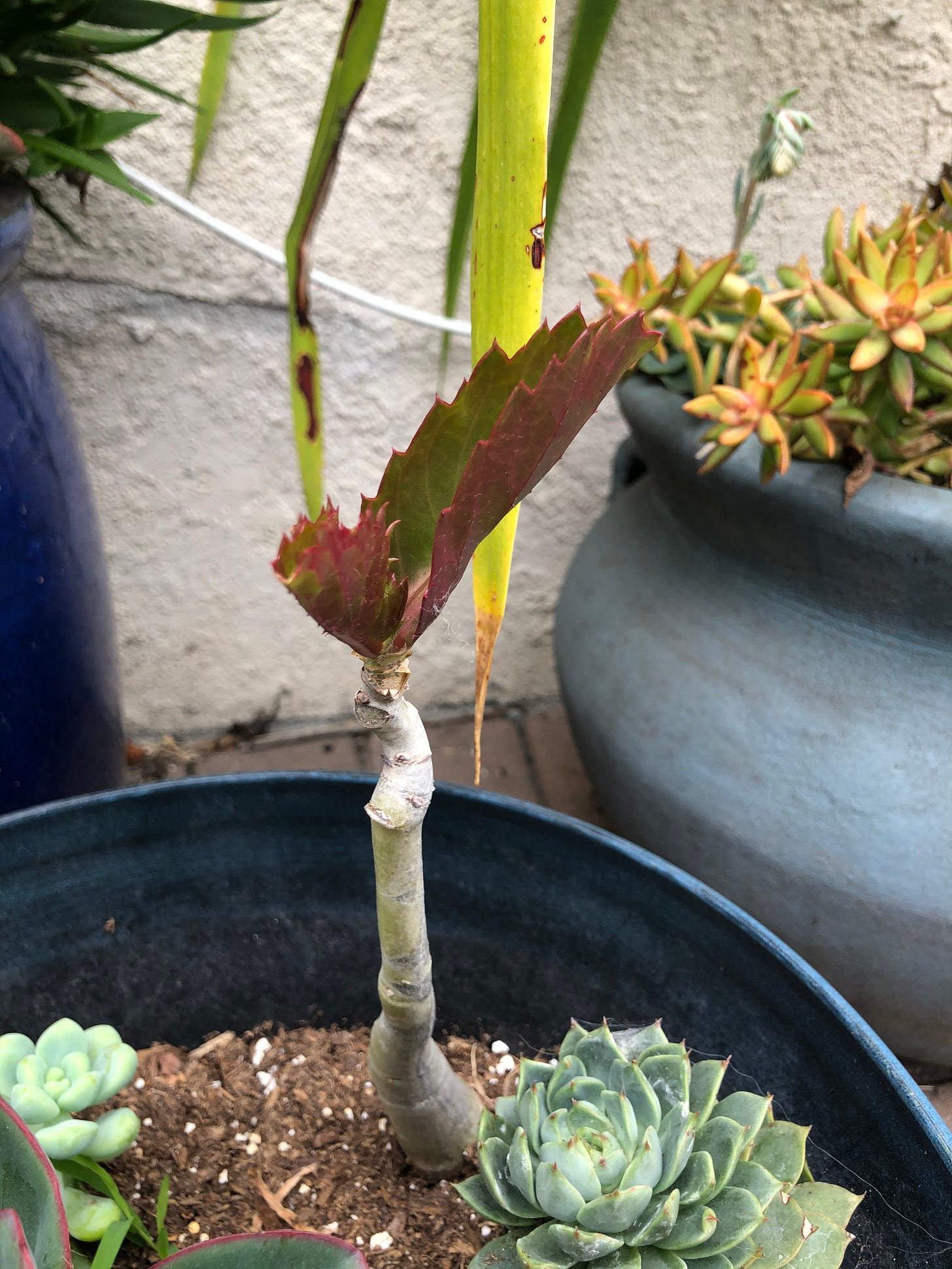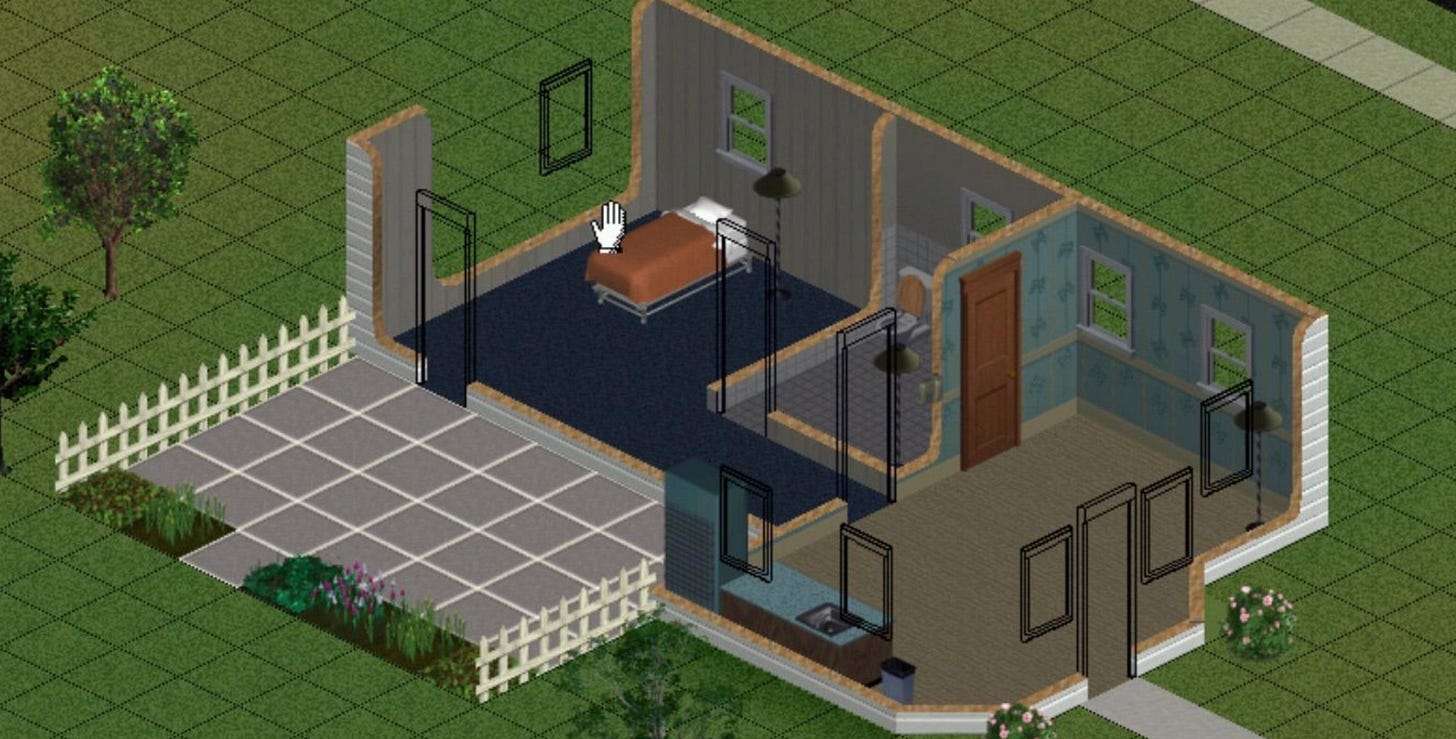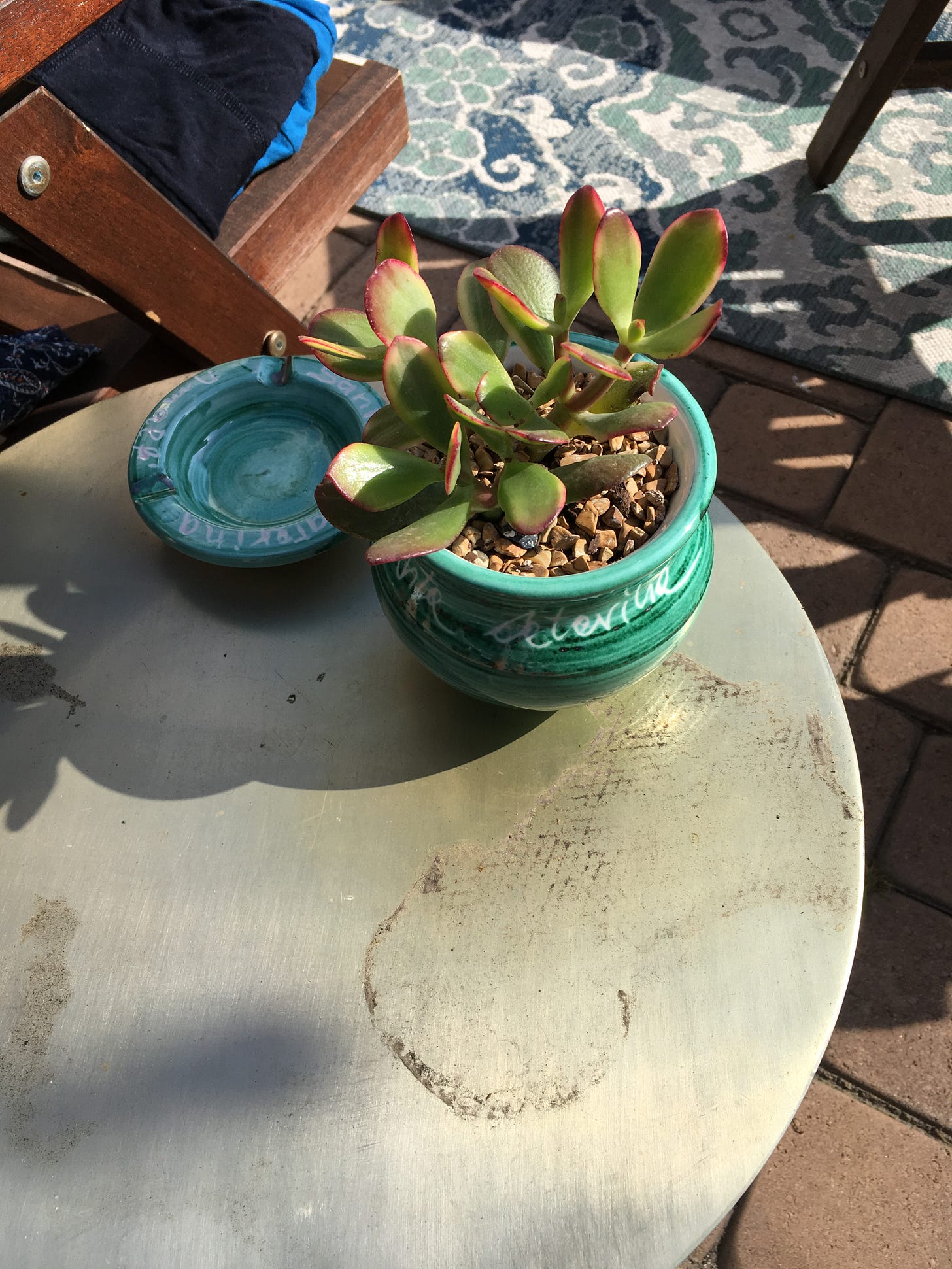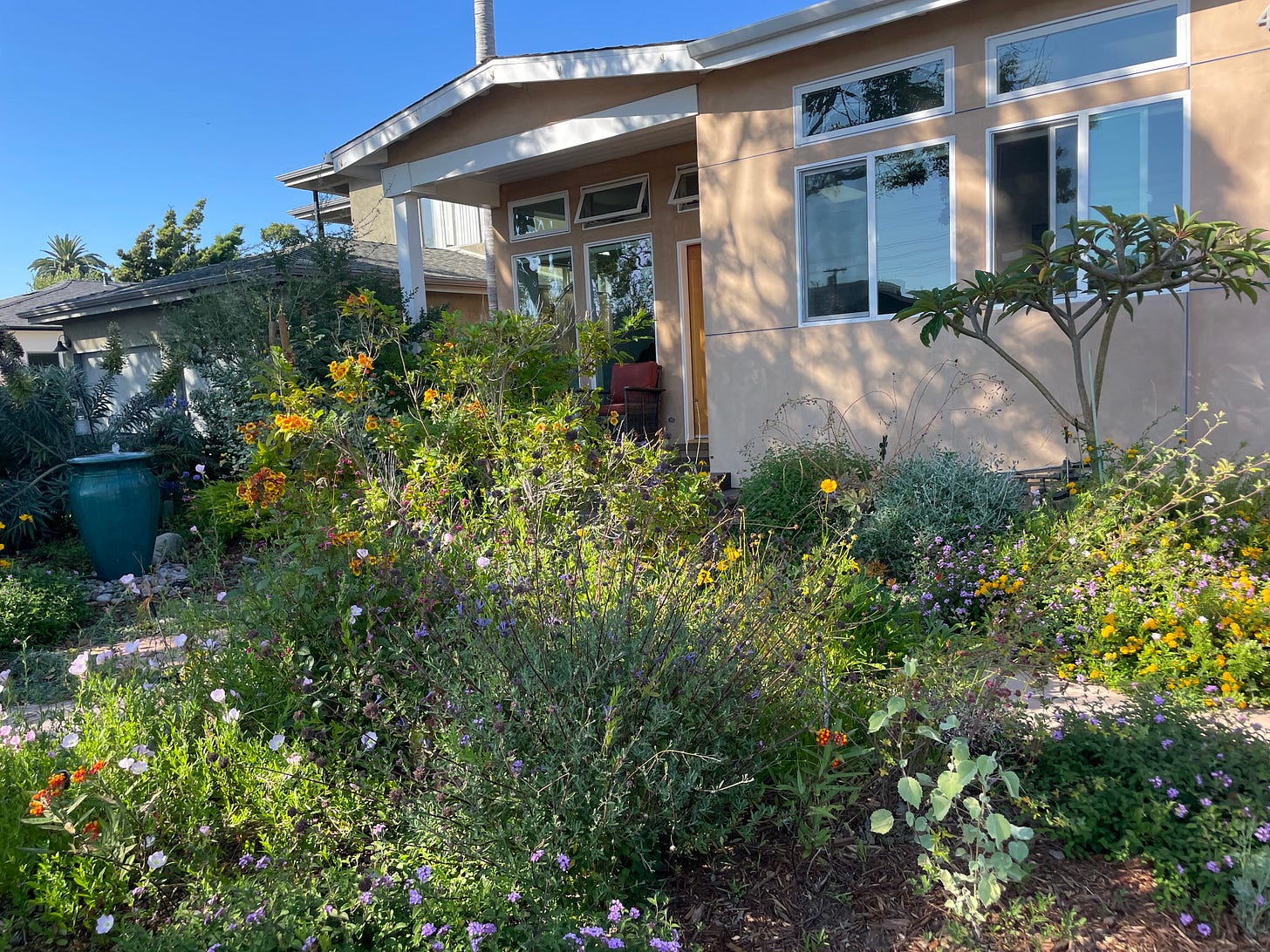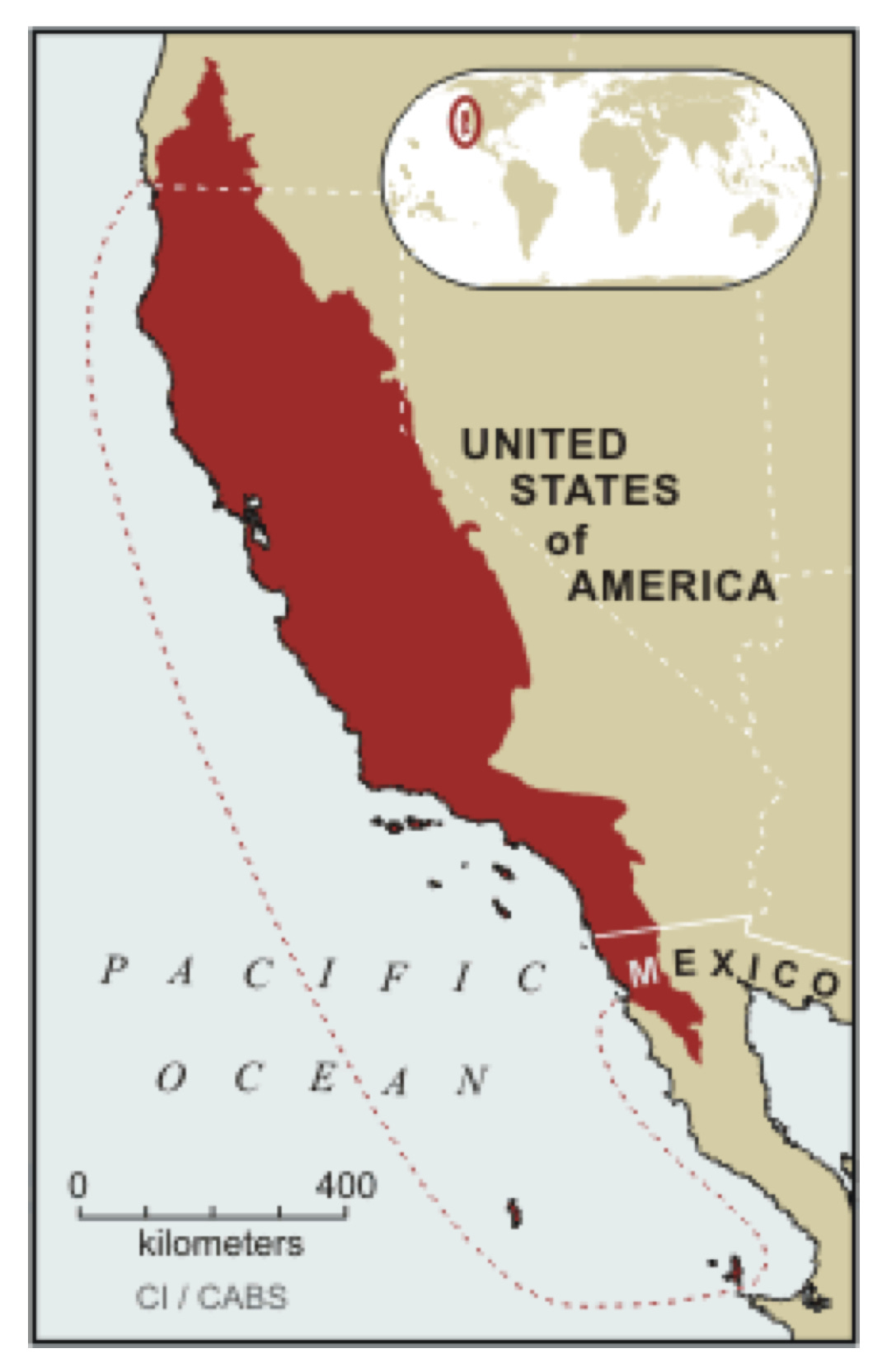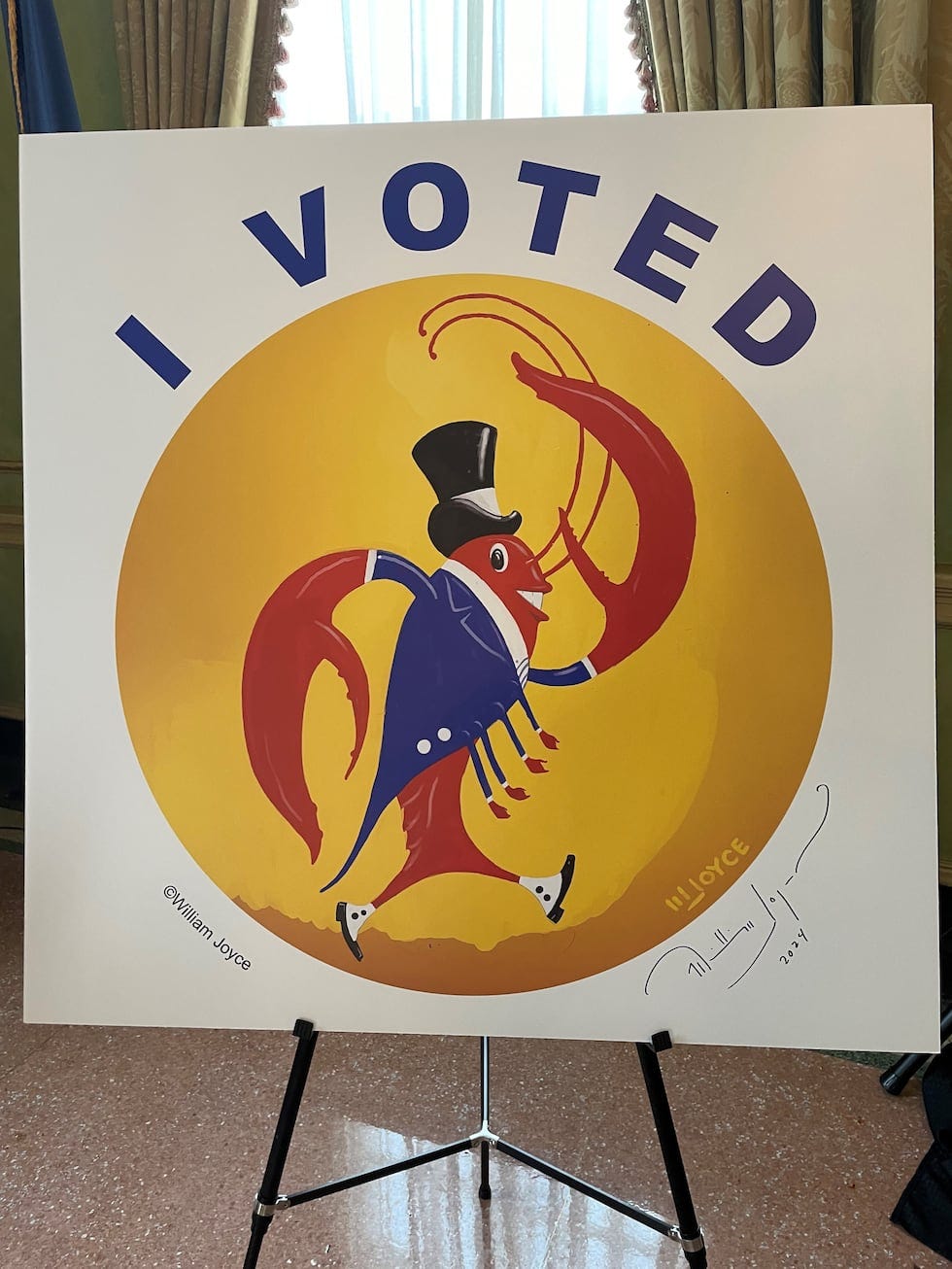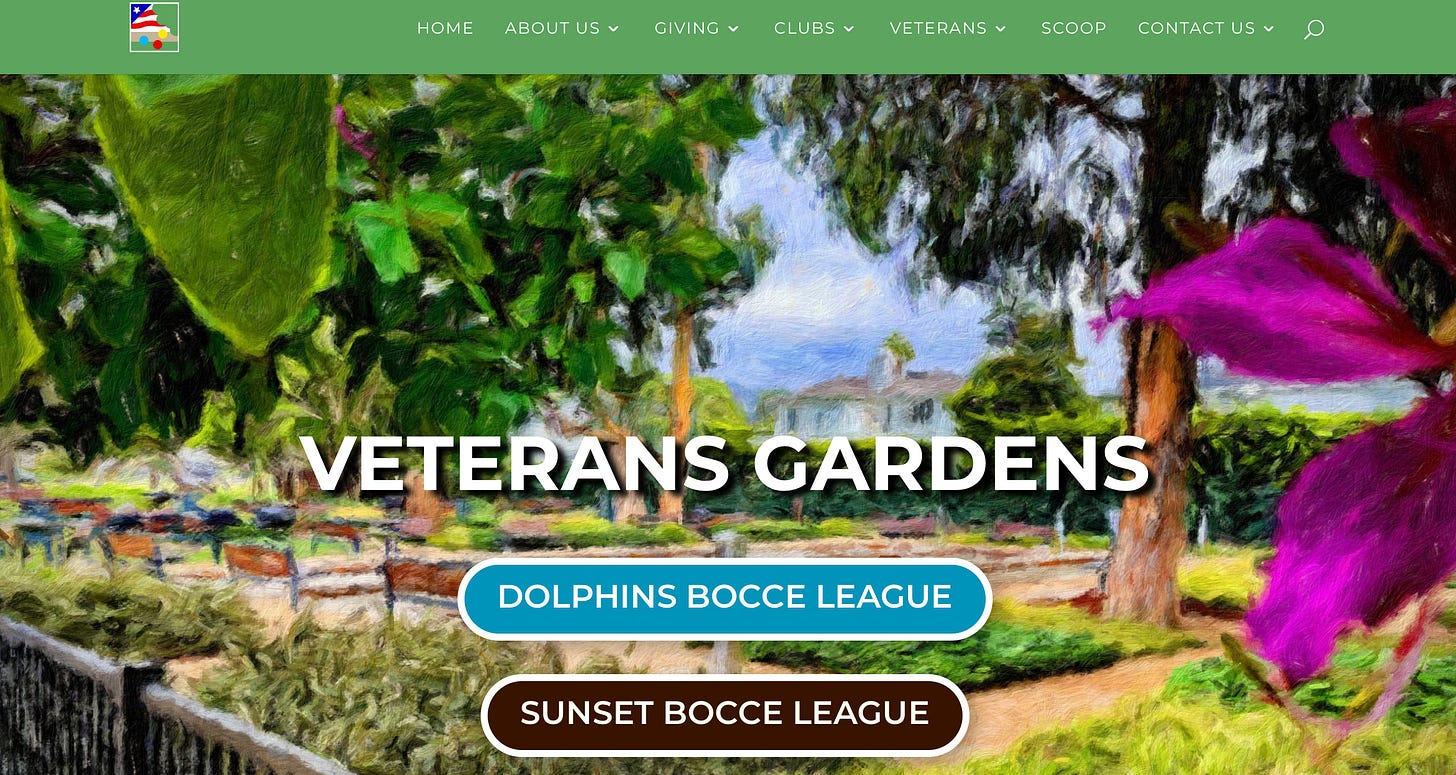Garden Aisle: The Natives Grow Restlessly
Showcasing Specimens from the California Floristic Province at Home
When not yelling about The Anthropocene, Garden Aisle is about showcasing desirable specimen plants and examining other points of interest for the home gardener.
//
I. Origins - Crassula Ovata
In the year 2000, Will Wright released The Sims.1 The game, without cheat codes enabled, was a nightmare and not very fun. Wright conceived of the game as a satire of modern consumerism, so it makes sense that your character could stay up all night reading a book about photocopier maintenance in the hopes of getting a much-needed raise at work, only to have a burglar come and steal your newly purchased 12-inch (!) television while you were away (or passed out from lack of sleep). Your character would weep at the loss of their low quality television set and then casually proceed to die in a sea of unwashed dishes and other filth. The poverty tax in The Sims was extreme, but at least your character was the owner of the dilapidated hovel that would become their tomb. Wright didn’t have the imagination in the late 90s to surmise that your avatar should also be paying someone rent for this whole situation.
With the infinite money cheat enabled (‘Rosebud’), I would instead build and furnish palaces for my Sims (many of them would still go on to drown in their swimming pools or perish in house fires, but not before throwing some great parties for their neighbors). Most of these rooms, I knew even as a preteen, benefitted from the inclusion of plants. They cheered up the Sims (and me) a little bit, as they made the digital floorpan full of expensive furnishings slightly better to look at. I especially favored the over-inclusion of two in-game houseplants (the rubber plant and the jade plant) for the waxy green quality of their digital foliage. As a bit of nostalgia, I continue to keep real specimens of both in my home today.
I didn’t think seriously again about plants until 2006, when an interior decoration article in GQ gave me the confidence to acquire my first succulent in real life. They recommended having a jade plant in your home, being low water and low maintenance (and possibly in the mind of the writer and reader, also proving to the poor companion you’ve brought home from a bar that you are not an axe murderer). My first jade plant was grown from a cutting I took from a large specimen in the Wrigley Memorial and Botanic Gardens in Avalon on Catalina Island. I placed the cuttings in some soil and was off and running. Why I couldn’t just buy one, I can’t say, but taking a cutting, acquired on one of my first sailing trips, made for unbeatable provenance in my mind. I also did an odd double take writing this just now—go back and read the description above for The Sims version of jade. Was the notion of maritime smuggling planted in my mind by a video game six years earlier? Unknowable, but fascinating.
I think this original jade ultimately had a bunch of hand soap dumped on it by college roommates in a fit of pique a year or 2 later, but my love of succulents endured and has since radiated into a sizable collection. By way of illustration, here’s a variegated jade I acquired in 2017, and then the same plant last week—having grown from a table top size to a small tree (albeit one that has leaves pulled off of it by my small children on a regular basis, in spite of the constant admonishment that plants are living things). Propagation for plants like these is simple (pressing a cast off leaf into new soil) and maintenance even easier—they more or less require no water in my coastal growing zone.
II. No Payne, No Gain
Since 2021, I’ve been moving away from succulents as my attention has turned to California native plants. We’ve all seen gardens with mixed Mediterranean plants, but some of the best California native gardens have stopped me in my tracks. Done properly, these gardens are incredibly fragrant, have blooms year round, and require essentially no water. Once established the main problem becomes one of pruning and maintaining a sense of order. The gardens are also alive with local fauna (I often think these gardens are a relief to wildlife, as every parcel around them has otherwise been turned into an alien landscape with unfamiliar plants).
I’ve found native plants harder much to work with than succulents, but also more rewarding. First, you end up needing to learn quite a lot about ecology to make them work (knowing where a plant is from and what it needs for each season becomes important). Many of these plants are also temperamental (the attrition can be quite high where sunlight, soil and watering conditions are not optimal). This seeming fragility disappears once the plants are established —they will quickly outcompete everything and turn into hedges if not pruned sensibly.
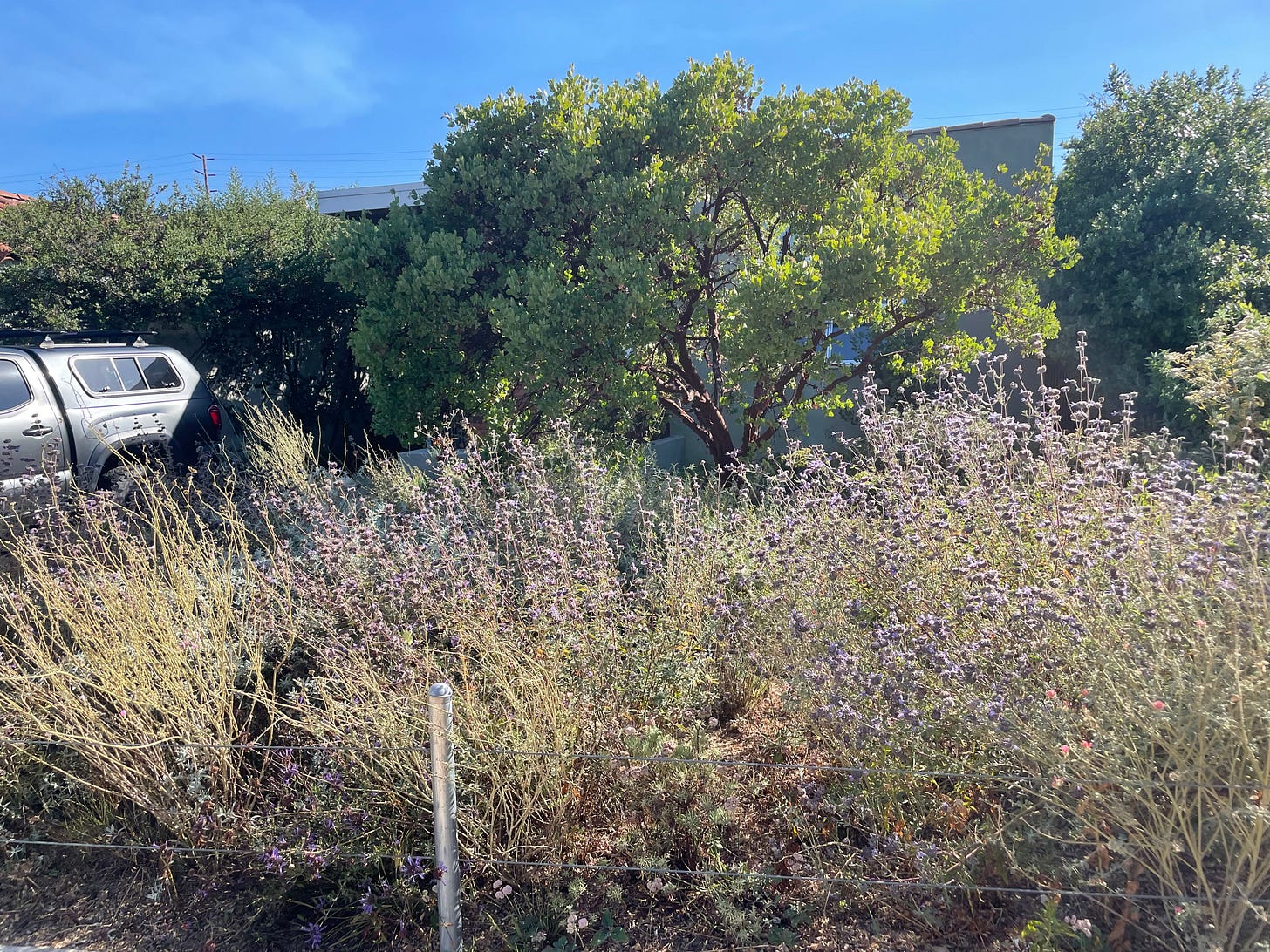
Most nurseries don’t carry California native plants in any appreciable quantity. Life would be sad indeed if you had to limit yourself to whatever Home Depot and the other commercial nurseries decided to have in stock (I think my radicalization started when I found Home De(s)pot selling small agaves that had been spray painted fluorescent pink and blue, a combination not found in nature and equally bad for the plants). In nursery cultivation, native specimens are generally very small, and planting them used to be of interest only to the conservationist. Luckily that is changing as natives supplant succulents and other ornamental specimens in the landscaping zeitgeist pushed by publications like Sunset magazine. My local native plant nursery is the Theodore Payne Foundation in nearby(ish) Sunland.2 I first stumbled upon this group when looking for things to feed my desert tortoise, and their tortoise forage seed mix was an early purchase. I have since thrown a small mint at them over the years as I’ve trial-and-errored my way into being a more knowledgable gardener. In addition to plants and seed mixes, Theodore Payne also offers classes and information to help those looking to work with native plants.
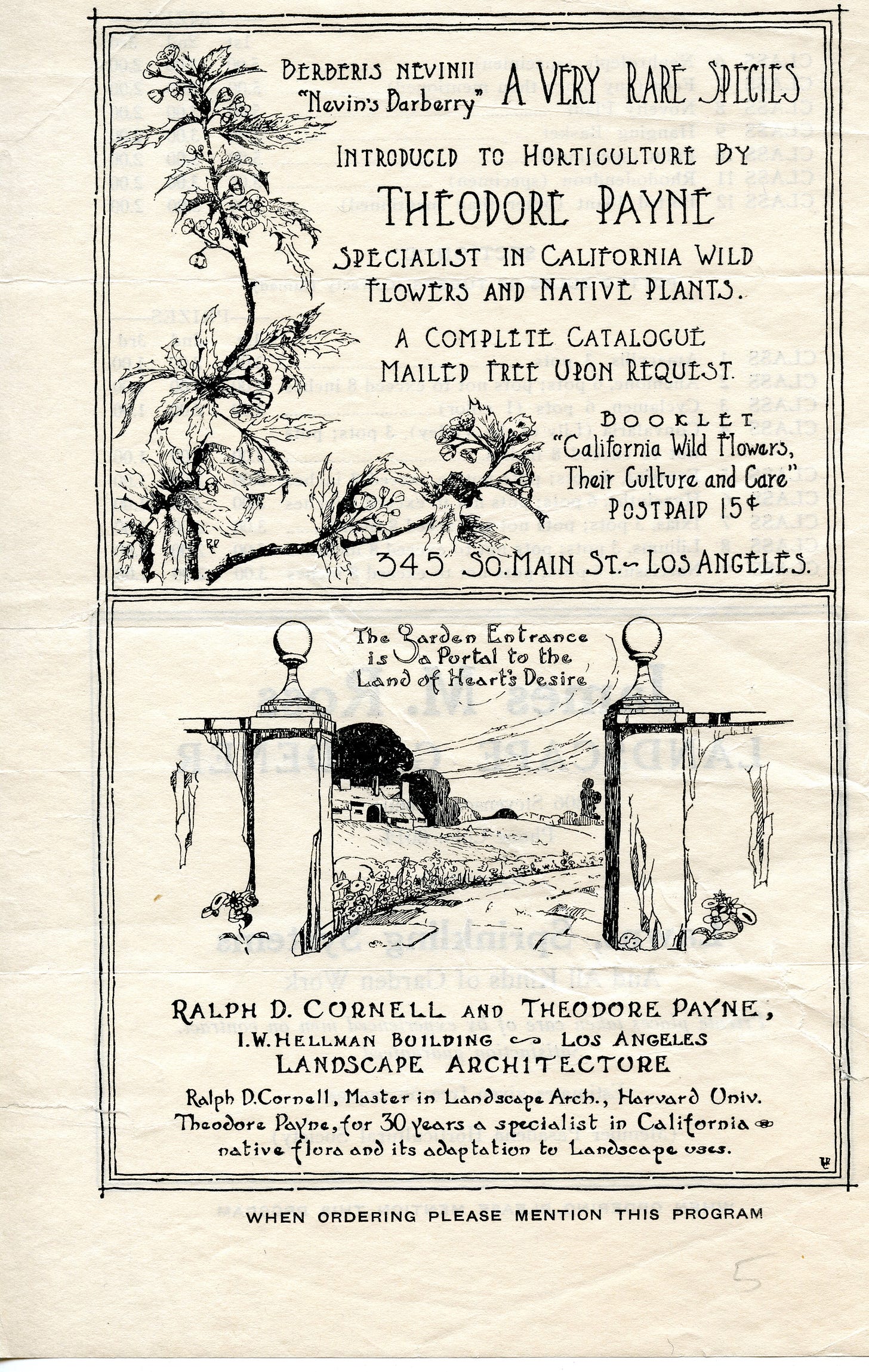
Of all the plants I’ve purchased from them over the last few years (samplings of buckwheat, manzanita, ceanothus, globemallow, dudleya, penstemon, sage, fuschia, the list goes on), I’d say 50% of those plantings did not make it. The other half that made it now benefit from seasonal pruning and are a constant delight—I have several species that only grow on the Channel Islands, so seeing them improbably flourish in my suburban park strip gives great satisfaction. So the work goes on and the California Floristic Province (the plant eco-community that stretches from Oregon into Mexico) has no shortage of interesting and rewarding plants to try (and inadvertently kill).
III. California’s Waxy, Neondemic Stonecrops
And so I wanted to highlight one variety of native plant I’ve had success with—California’s native succulent family Dudleya. This family has about 45 species (10 of which are threatened/endangered, and 26 of which can only be found growing on sea cliffs). The Dudleya group is a bit lesser known than other succulents (e.g., graptopetalum, aenoium, etc.), but some varieties are of interest to international collectors and susceptible to overharvesting/poaching in the few places they occur naturally. This group is otherwise known for waxy coatings on its leaves, and low mounding growth (usually in rosettes). They tend to do well anywhere that has a dry summer and a wetter/rainfall prone winter.
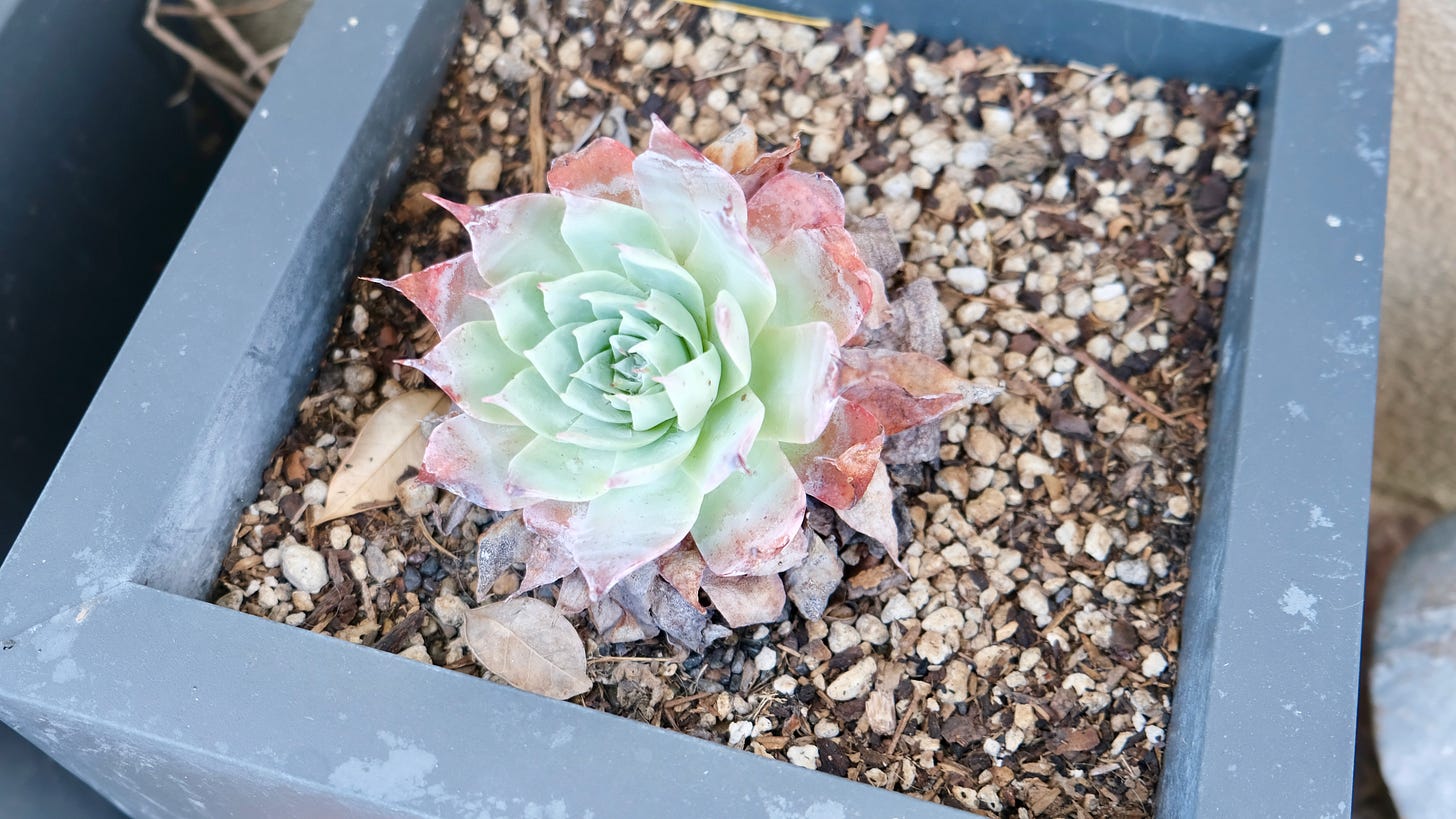
The ancestors of these plants arrived in North American around 5 million years ago (which is a short amount of time when we’re talking about plant evolution) and have developed in relative isolation since. Genetically, understanding Dudleya is still a work in progress, but current research suggests they are closely related to sedum (the stonecrop family).

So long as the plants have good drainage (landscapers recommend planting them at an angle so water runs off the rosettes and the plants dont stay wet), they do quite well in rock gardens or areas with very little soil. For my own purposes I am using them to line a very small planter next to my driveway—my hope is that the small footprint and concrete surroundings will adequately mimic their natural rock face habitat.
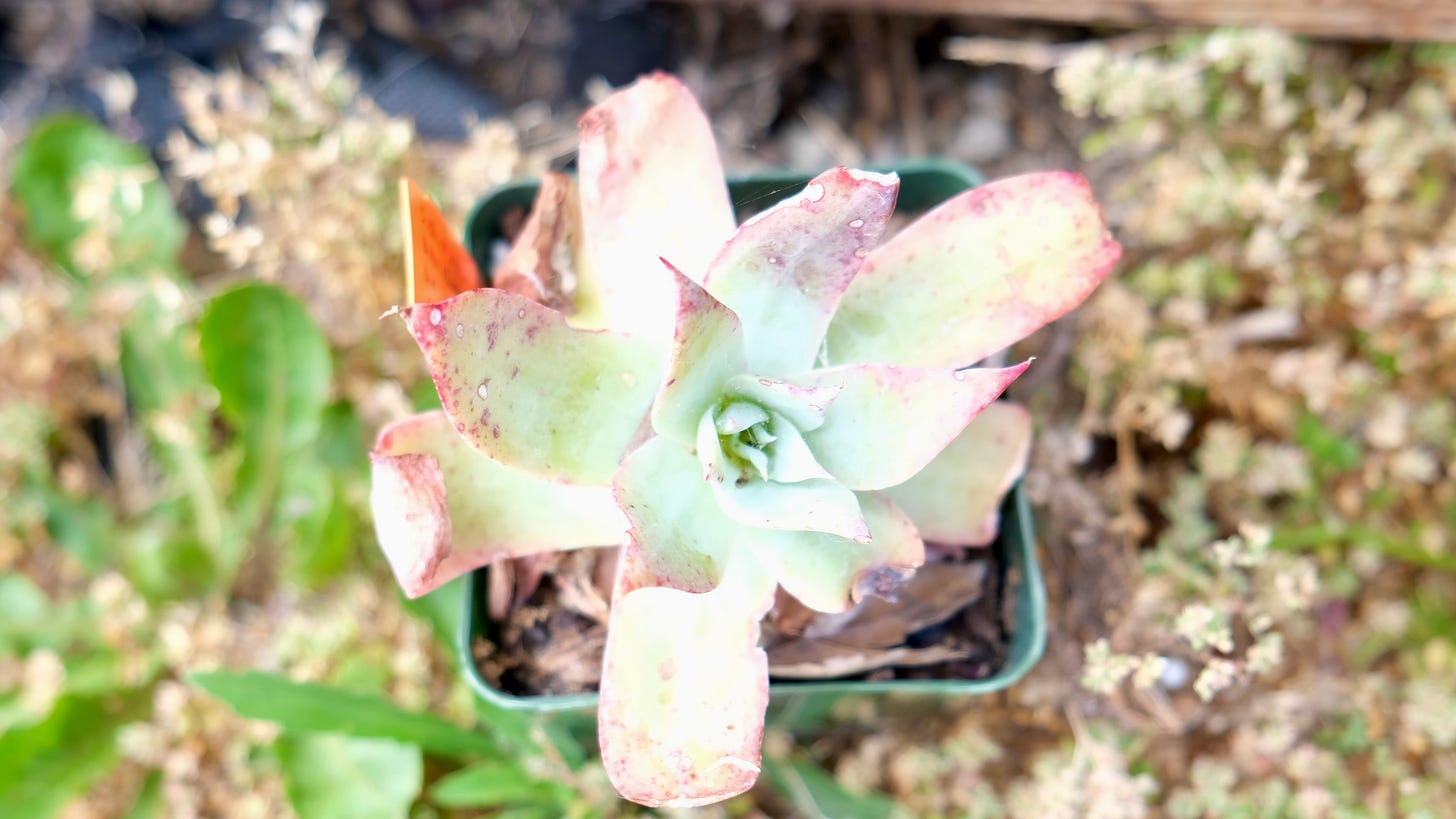
The Brittonii variety, Giant Chalk Dudleya, is known to me and has been doing well enough in my yard that I’m puttng in more of them. They are 12-18 inches wide once fully mature and can be found growing all along the Pacific Ocean in Baja California and Isla Todos Santos—a nice reminder that ecological associations exist in open contempt of borders (that Baja California is now Mexico is a recent geopolitical development, and is meaningless on most scales of time).
To continue my garden’s theme of choosing Channel Islands endemics, I’ve added a second variety of Dudleya, hassei or the Santa-Catalina Live Forever. When fully grown, it’s 8 inches tall and forms a bush about 6 feet across (and looks like a cluster of sea anenomes). It is found only on the cliffs of Santa Catalina Island, and is a nice reminder of the first jade plant I propagated.
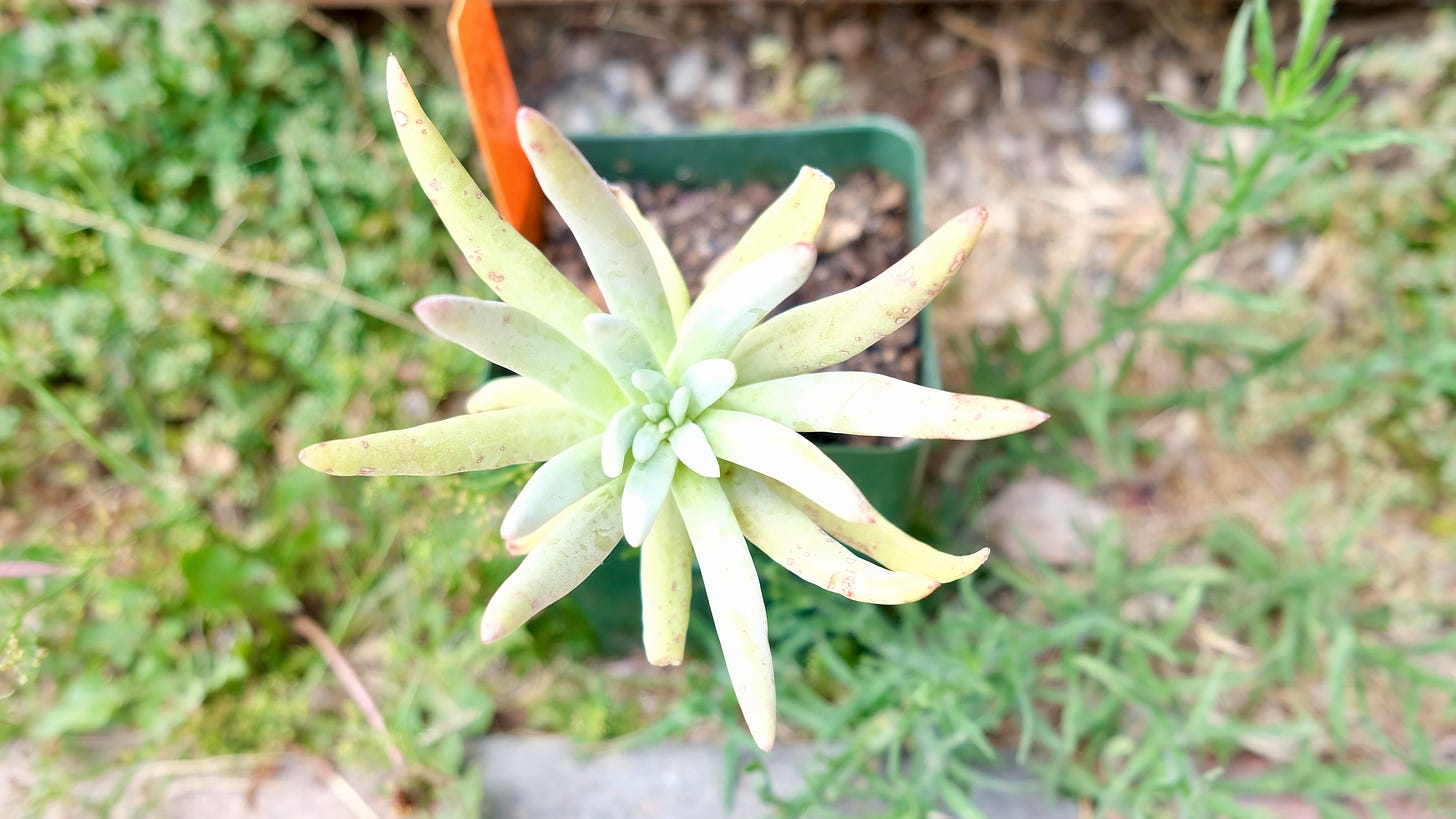
I’ll let these plants continue to acclimate in situ for a few more weeks and then plant them sometime in August. If they make it, I’ll have created an artificial, horizontal sea cliff in my driveway.
//
Internet Bycatch
Wherein my favorite pieces from the endless ocean of internet content are displayed alongside the day’s catch.

A meditative, 6-minute video looking at what it means to wear the newspaper hat. Fred X. Brownstein is a new hero of mine, and here’s a great article looking at the man in-depth. If you aren’t interested in the questions that come with being one of the last people practicing the carefully passed down marble carving techniques of the Italian masters, I would suggest your Sim probably needs to get back to reading the book on photocopier maintenance. That raise is as good as yours, and the humanities don’t pay the bills.
Voter turnout would be irreversibly boosted if every state would bother to design a great “I Voted” sticker. Louisiana, in collaboration with artist William Joyce, has unveiled crawfish mascot ‘Mark De Ballot,’ and it’s a triumph.
Todd Snyder has a new line for those who love gardening. I’m not into a lot of it, but the garden smock is tempting (pictured below). To my total surprise, they also have a collaboration with Sabahs out (the ultimate vacation shoe, as I’ve written and highlighted previously).
Something I love, but don’t get to do often enough, is play bocce. The Los Angeles Times has a nice piece out highlighting the thriving bocce leagues in Veterans Park in the Pacific Palisades. Something to keep an eye on for the fall.
Instagram has been trying very hard to sell me TropicFeel boating shoes (they have a collection out in collaboration with The America’s Cup). Not biting for now, but always interesting to see how sharp the algorithm can be.
Sundance Film Festival is continuing its ruse of a process whereby it claims to be looking for a new city to hold the festival. They have listed 6 city finalists. I will leave it to you to identify which (select three) of these are completely stupid/conceptually unacceptable for what has traditionally been a snowy, Western festival. Here they are (in alphabetical order): (i) Atlanta, Georgia; (ii) Boulder, Colorado; (iii) Cincinnati, Ohio; (iv) Louisville, Kentucky; (v) Park City/Salt Lake City, Utah; (vi) Santa Fe, New Mexico
.
Wright had released SimCity about a decade prior and was inspired to create this new home building/life simulation game when: (i) he had just lost his house and everything he owned in a massive wildfire; and (ii) he had concluded development on a game simulating the lives of ants. You put those two things together and you get The Sims.
Coincidentally my father’s childhood home is about a half mile from this nursery in the foothills of the Verdugo Mountains, so the 30-40 minute drive over there usually doubles as a nice meditation on my origins.

